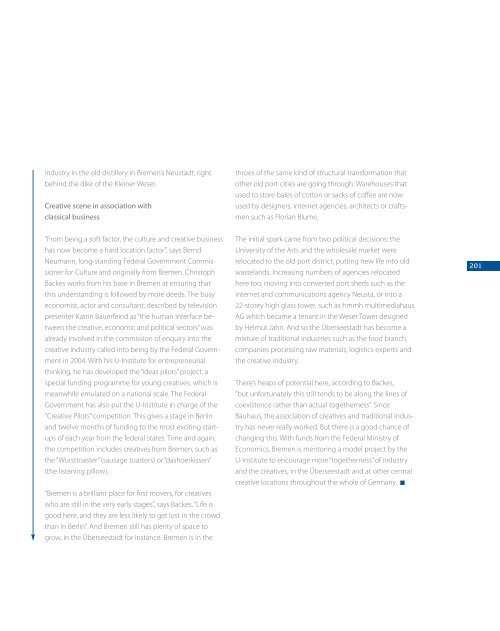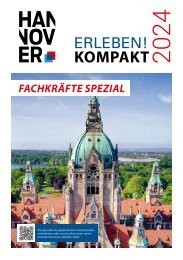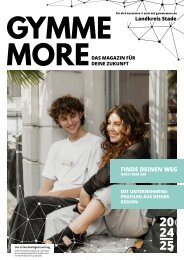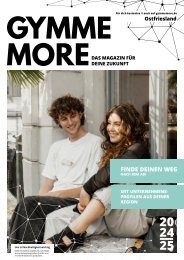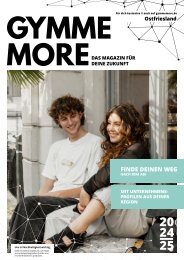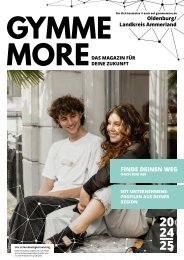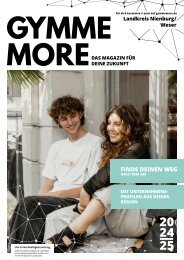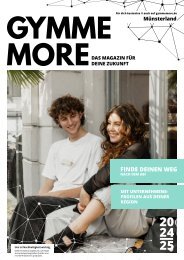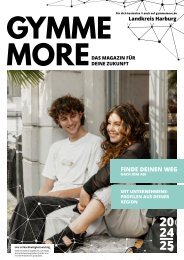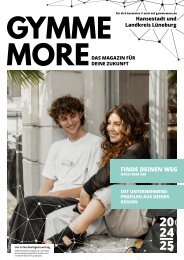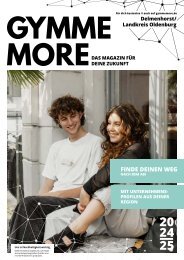Erfolgreiche ePaper selbst erstellen
Machen Sie aus Ihren PDF Publikationen ein blätterbares Flipbook mit unserer einzigartigen Google optimierten e-Paper Software.
industry in the old distillery in Bremen’s Neustadt, right<br />
behind the dike of the Kleiner Weser.<br />
Creative scene in association with<br />
classical business<br />
throes of the same kind of structural transformation that<br />
other old port cities are going through. Warehouses that<br />
used to store bales of cotton or sacks of coffee are now<br />
used by designers, internet agencies, architects or craftsmen<br />
such as Florian Blume.<br />
“From being a soft factor, the culture and creative business<br />
has now become a hard location factor”, says Bernd<br />
Neumann, long-standing Federal Government Commissioner<br />
for Culture and originally from Bremen. Christoph<br />
Backes works from his base in Bremen at ensuring that<br />
this understanding is followed by more deeds. The busy<br />
economist, actor and consultant, described by television<br />
presenter Katrin Bauerfeind as “the human interface between<br />
the creative, economic and political sectors” was<br />
already involved in the commission of enquiry into the<br />
creative industry called into being by the Federal Government<br />
in 2004. With his U-Institute for entrepreneurial<br />
thinking, he has developed the “ideas pilots” project, a<br />
special funding programme for young creatives, which is<br />
meanwhile emulated on a national scale. The Federal<br />
Government has also put the U-Institute in charge of the<br />
“Creative Pilots” competition. This gives a stage in Berlin<br />
and twelve months of funding to the most exciting startups<br />
of each year from the federal states. Time and again,<br />
the competition includes creatives from Bremen, such as<br />
the “Wursttoaster” (sausage toasters) or “dashoerkissen”<br />
(the listening pillow).<br />
“Bremen is a brilliant place for first movers, for creatives<br />
who are still in the very early stages”, says Backes. “Life is<br />
good here, and they are less likely to get lost in the crowd<br />
than in Berlin”. And Bremen still has plenty of space to<br />
grow, in the Überseestadt for instance. Bremen is in the<br />
The initial spark came from two political decisions: the<br />
University of the Arts and the wholesale market were<br />
relocated to the old port district, putting new life into old<br />
wastelands. Increasing numbers of agencies relocated<br />
here too, moving into converted port sheds such as the<br />
internet and communications agency Neusta, or into a<br />
22-storey high glass tower, such as hmmh multimediahaus<br />
AG which became a tenant in the Weser Tower designed<br />
by Helmut Jahn. And so the Überseestadt has become a<br />
mixture of traditional industries such as the food branch,<br />
companies processing raw materials, logistics experts and<br />
the creative industry.<br />
There’s heaps of potential here, according to Backes,<br />
“but unfortunately this still tends to be along the lines of<br />
co existence rather than actual togetherness”. Since<br />
Bauhaus, the association of creatives and traditional industry<br />
has never really worked. But there is a good chance of<br />
changing this. With funds from the Federal Ministry of<br />
Economics, Bremen is mentoring a model project by the<br />
U-Institute to encourage more “togetherness” of industry<br />
and the creatives, in the Überseestadt and at other central<br />
creative locations throughout the whole of Germany.<br />
201


